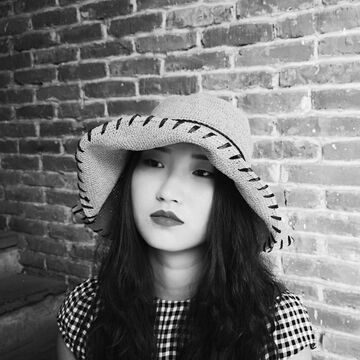| Summer Institute: Designed Objects |
Early College Program Summer Institute |
403 (001) |
Summer 2025 |
|
Description
In this course you will learn about contemporary design with a focus in Designed Objects. Through collaborative work and one-on-one mentoring, you will develop design ideas, research, draft, and develop individualized projects and proposals. You will learn about contemporary designers and build design skills from drawing, researching, and ideation. The course will include demonstrations geared to your passions, as well as time for self-directed work and comprehensive faculty advising. You¿ll engage in discussions and critiques with your peers, create portfolio-quality work, and receive comprehensive guidance on developing competitive applications for college admissions to art and design programs.
|
Class Number
1293
Credits
2
|
| Summer Institute: Visual Communication Design |
Early College Program Summer Institute |
408 (001) |
Summer 2025 |
|
Description
This course covers the elements and principles of graphic design and provides students with the technical and conceptual tools to develop effective design strategies. Students expand their understanding of what surrounds them and learn how to look at and evaluate products, graphics, architecture, advertisements, and more. Class discussions challenge students to consider the world of design through a contemporary art lens, drawing upon the work of Saul Bass, Paul Rand, Paula Scher, and others. In addition to using traditional materials like sketchbooks, students use Adobe Illustrator, InDesign, and Photoshop, and output work using high quality digital printers. Students can expect to create portfolio-quality works that explore symbols, logos, typography, layout, image and text integration, and sequential design.
*NOTE* Basic computer experience required.
|
Class Number
1129
Credits
2
|
| Introduction to Graphic Design |
Adult Continuing Education |
501 (001) |
Spring 2025 |
|
Description
This course examines the fundamentals of two-dimensional design in the digital age. Students will explore principle elements of design including composition, color, and typography through a series of projects that introduce Adobe Illustrator and Photoshop as primary graphic design tools. The importance of effective visual communication in both commercial and experimental design is stressed as students gain an understanding of the professional design process from the client brief to the finished digital project. Students will leave this course with a solid foundation in strategies for solving design problems, a basic design vocabulary, and an understanding of the specific role that Adobe Illustrator and Photoshop play in creating professional work. Before starting this course, students should be comfortable creating, deleting, renaming, and moving files and directories without assistance.
|
Class Number
2302
Credits
1
|
| Introduction to Visual Communication |
Visual Communication Design |
1001 (002) |
Spring 2025 |
|
Description
This research, discussion, and critique course develops a visual and verbal vocabulary by examining relationships between form and content, word and image. Study includes symbolic association and the problem of effective communication in a highly complex culture.
|
Class Number
1778
Credits
3
|
| Introduction to Visual Communication |
Visual Communication Design |
1001 (004) |
Fall 2025 |
|
Description
This research, discussion, and critique course develops a visual and verbal vocabulary by examining relationships between form and content, word and image. Study includes symbolic association and the problem of effective communication in a highly complex culture.
|
Class Number
1841
Credits
3
|
| Design Strategies |
Visual Communication Design |
2900 (087) |
Spring 2025 |
|
Description
What are the concerns that drive one's creative practice? How does one set the terms for its future development? Sophomore Seminar offers strategies for students to explore, reflect upon, and connect common themes and interests in the development of an emerging creative practice that will serve as the basis of their ongoing studies at SAIC and beyond. Students will examine historical and contemporary influences and contextualize their work in relation to the diverse art-worlds of the 21st Century. Readings, screenings, and field trips will vary each semester. Presentations by visiting artists and guest speakers will provide the opportunity for students to hear unique perspectives on sustaining a creative practice. One-on-one meetings with faculty will provide students with individualized mentorship throughout the semester. During interdisciplinary critiques, students will explore a variety of formats and tools to analyze work and provide peer feedback. The class mid-term project asks students to imagine a plan for their creative life and devise a self-directed course of study for their time at school. The course concludes with an assignment asking students to develop and document a project or body of work demonstrating how the interplay of ideas, technical skills, and formal concerns evolve through iteration, experimentation and revision.
Prerequisite: Must be a sophomore to enroll.
|
Class Number
2147
Credits
3
|

